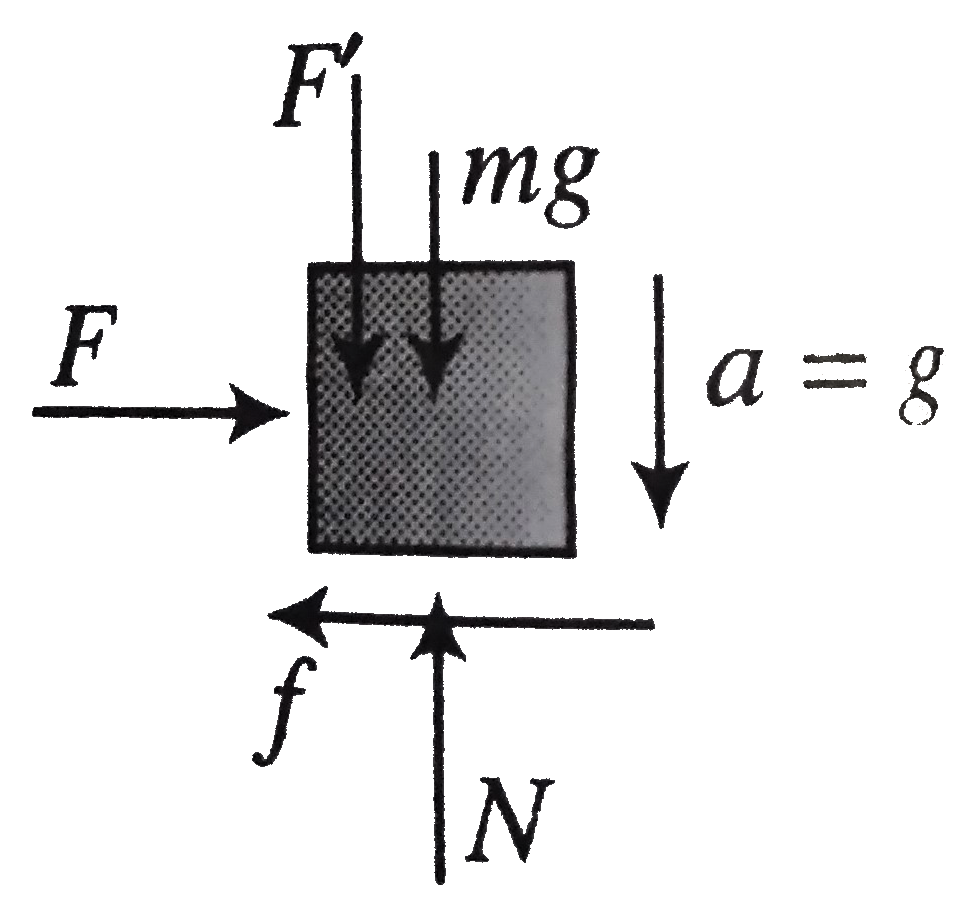If in pervious problem, an additional force F'=100N is applied in vertical direction as shown in figure The friction force acting on the block is
zero
10N
20N
5N
The correct Answer is:d
Here normal reaction N=F'=100N
(F'+mg−N=mg)
Hence flim=μsN=0.1×100=10N
Hence block will not move friction will be static
Hence f=5N

Topper's Solved these Questions
- NEWTON'S LAWS OF MOTION 2Book:CENGAGE PHYSICSChapter:NEWTON'S LAWS OF MOTION 2Exercise:Multiple Correct
Explore 2 Videos
- NEWTON'S LAWS OF MOTION 2Book:CENGAGE PHYSICSChapter:NEWTON'S LAWS OF MOTION 2Exercise:Linked Comprehension
Explore 52 Videos
- NEWTON'S LAWS OF MOTION 2Book:CENGAGE PHYSICSChapter:NEWTON'S LAWS OF MOTION 2Exercise:Subjective
Explore 21 Videos
- NEWTON'S LAWS OF MOTION 1Book:CENGAGE PHYSICSChapter:NEWTON'S LAWS OF MOTION 1Exercise:Integer
Explore 5 Videos
- PROPERTIES OF SOLIDS AND FLUIDSBook:CENGAGE PHYSICSChapter:PROPERTIES OF SOLIDS AND FLUIDSExercise:INTEGER_TYPE
Explore 2 Videos
Similar Questions
Knowledge Check
As shown in the figure , the friction force acting on the block is
 A50NB30NC20NDNone
A50NB30NC20NDNoneConsider the situation as shown in figure, frictional force acting between surface and 3 kg block is
 A15 NB10 NC0 ND4 N
A15 NB10 NC0 ND4 NIf the mass of block is 1 kg and a force of 10 / √3 N is applied horizontally on the block as shown in the figure . The frictional force acting on the block is :
 AzeroB10√3NC20√3ND5 N
AzeroB10√3NC20√3ND5 N
A cubical block is experiencing three forces F1=20N acts at angle 45∘with horizontal and lies in diagram plane of the cube F2=30N acts along y- axis and F3=40N acts in x- direction as shown in fig find the friction force acting on the block if it is at rest

View SolutionCalculate F such that frictional force acting on all blocks zero.

View SolutionA block of mass 2kg is kept on the floor. The coefficient of static friction is 0.4 . If a force F of 2.5N is applied on the block as shown in the figure, the frictional force between the block and the floor will be.

View SolutionA force ¯¯¯F=ˆi+4ˆj acts on block shown. The force of friction acting on the block is :

View SolutionPower of a force acting on a block varies with time t as shown in figure. Then, angle between force acting on the block and its velocity is

View Solution



 ]
]